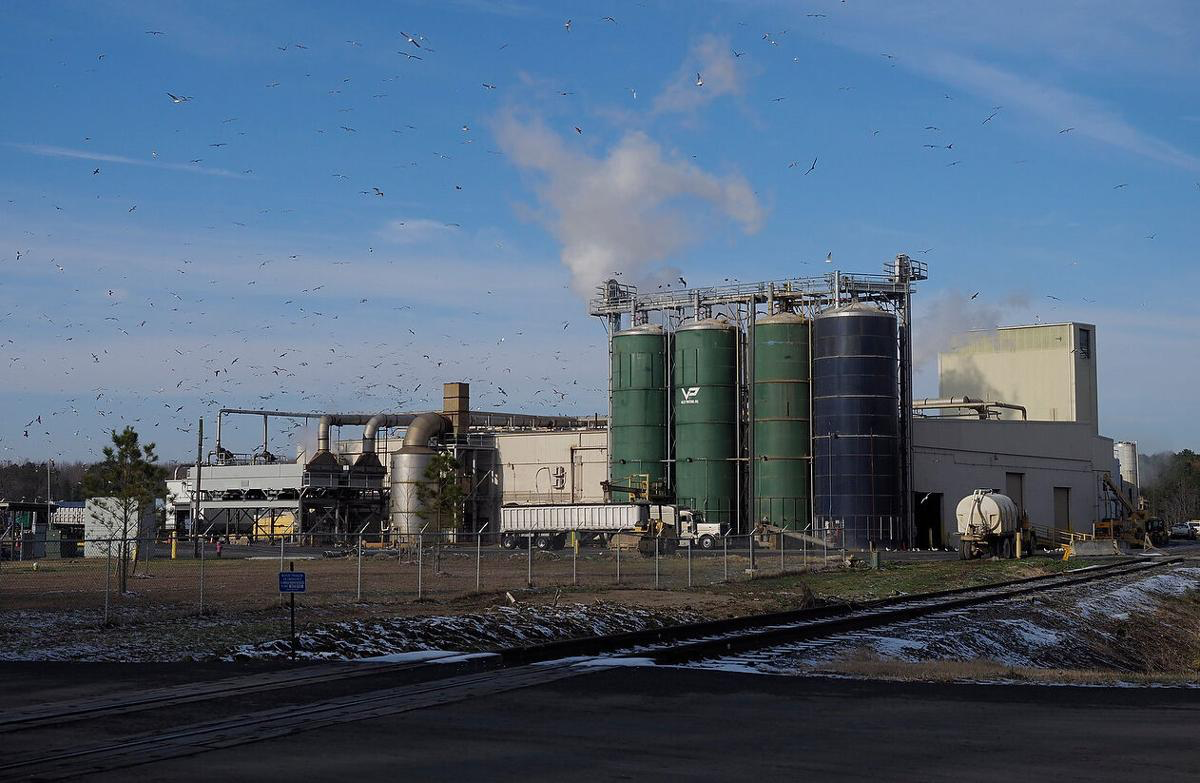By Christian Baran
Valley Proteins, a chicken rendering plant in Dorchester County, is flooding the Chesapeake Bay with the byproducts of its operations, which feature harmful nutrients like ammonia, nitrates and nitrogen. The company’s water pollution permit expired years ago, but it continues to operate and discharge waste.
Even under the expired permit’s guidelines, Valley Proteins operates in negligence. According to the EPA’s enforcement and compliance database, the company habitually fails to report wastewater discharge information. When the information does get reported, it often indicates gross disregard of the legal limits.
The state, the company and various environmental organizations all recognize that this stripe of behavior can’t last. The good news: change is finally here, in a planned wholesale upgrade of Valley Proteins’ water treatment facilities. The bad news: we’re (read: the taxpayers are) paying for it.
For most of this year, Valley Proteins was slated to receive over $13 million dollars to bolster its wastewater treatment capacities. The funds come from the Bay Restoration Fund, a state-owned pot of money dedicated to upgrading Maryland’s wastewater treatment plants. Individual and industrial users of wastewater treatment plants contribute to the fund via a yearly tax, which amounts to over $100 million annually. Although publicly owned treatment plants have priority access to the money, Maryland legislators are technically permitted to consider private facilities on a case-by-case basis. Valley Proteins would be the first such case in the fund’s 17-year history.
The proposal to supply Valley Proteins with public assistance to manage its pollution was met with outrage by some lawmakers. For some, the move just didn’t sit right. One Democratic state senator said it didn’t “pass the smell test.” Others objected that private companies shouldn’t be permitted to receive money from the Bay Restoration Fund, although the action is, at the time of writing, admissible under the bill. The Maryland State Senate recently approved a budget plan that reduces the amount of the grant. It’s still too much.
Lawmakers are right to be concerned. The decision to provide Valley Proteins with taxpayer money lands squarely in the nationwide debate over how we should proceed with a green economy, with implications beyond the fate of this particular company. It’s a local case study in the role of government in the green market, one that diverges from traditional discussion of renewable energy.
Although limits on nutrient pollution are distinct from energy standards, both fall under the umbrella of pollution emission restrictions. The role of government in each is complicated, but arguably much simpler in the former.
In both cases, the government is free, indeed, encouraged to, set limits on bad behavior like dumping nitrates into Chesapeake tributaries or burning coal. These pollution ceilings already exist for Valley Proteins. This grant is essentially a government subsidy to help the company meet their limits. In this sense, it’s very similar to federal subsidies for renewable energy.
Those energy subsidies are meant to encourage environmentally beneficial behaviors that have significant impediments. The solar industry, for example, must overcome vast regulatory frameworks that skew towards existing energy producers like the coal and oil industries. The barriers for entry are enormous.
This Valley Proteins grant will also, at its core, support an environmentally conscious action: mitigating nutrient pollution. However, in this case, the barriers are much smaller. In fact, the only true obstacle is cost. The renewable sector can’t control many of the prohibitive institutions that make it difficult for them to gain a foothold in the economy — cost is only one of many hurdles for them. Valley Proteins can and should control its own waste disposal and the attendant financial burden. If it can’t, it’s simply not a competitive company.
For these reasons, it’s particularly odd to me that Democrats lawmakers seem to be more vocal in their criticism of the Valley Proteins grant than Republicans. The move does not align with the free market approach inherent in conservative beliefs. The conservative value of smaller government should, theoretically, mean opposition to what amounts to unnecessary intervention by the state.
Regardless of political affiliation, lawmakers should oppose Maryland supplying Valley Proteins with taxpayer money to revamp its wastewater system. In this case, all the government needs to do is set pollution limits. Let private companies meet them themselves. The state should continue to support pollution reduction, but not by throwing handouts at companies violating regulations.
A number of environmental organizations are currently planning to sue Valley Proteins for their transgressions. The point could potentially be moot if the company receives aid to upgrade its facilities. This would be a massive failure of our legal and political institutions. If the industry is in the wrong, we must hold it accountable. If you agree, write to your state senator urging them to prevent this grant.


